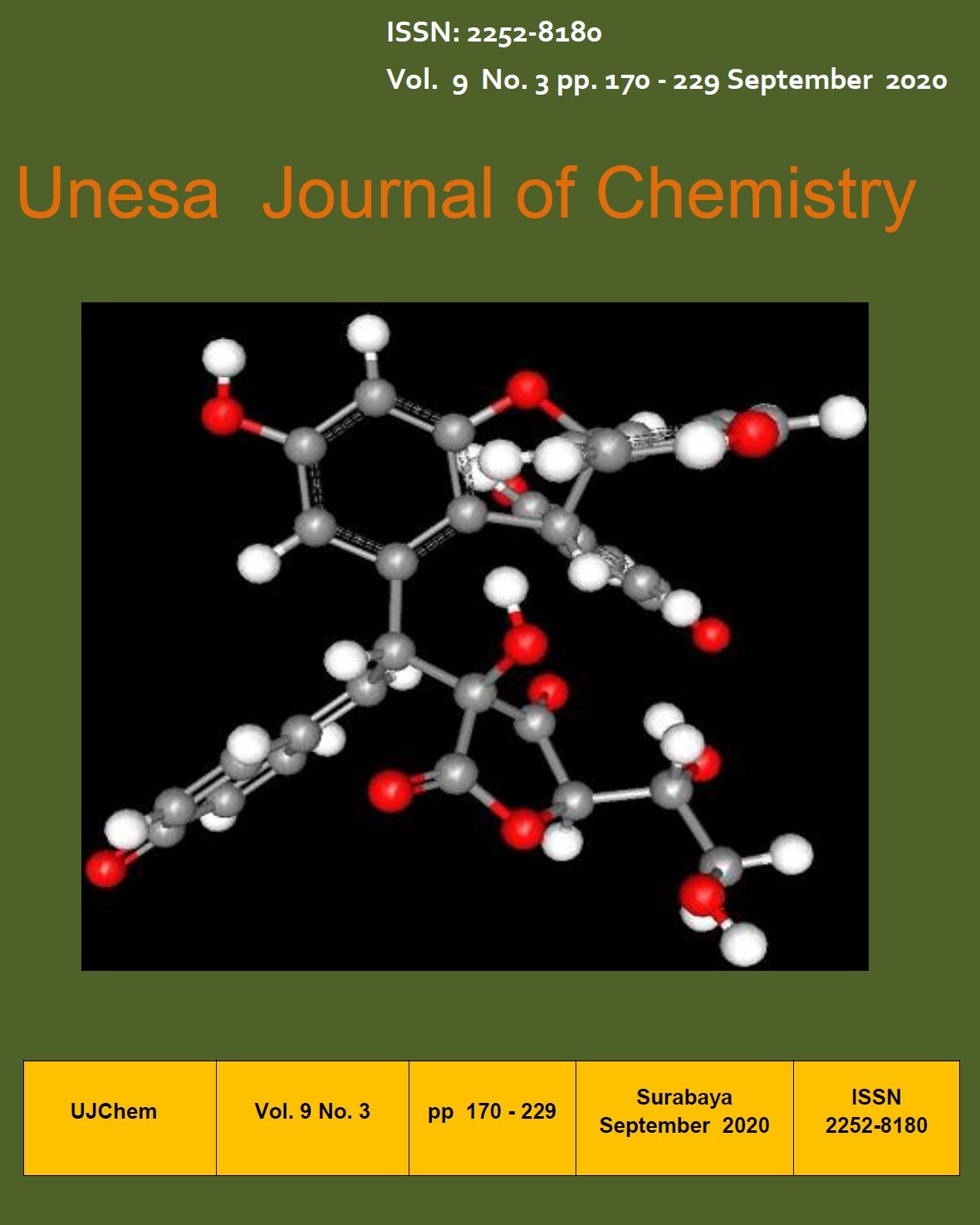PENGARUH VARIASI pH TERHADAP PENGUKURAN ASAM OKSALAT DENGAN ELEKTRODA GRAPHENE OXIDE TERMODIFIKASI NANOBENTONIT SECARA SIKLIK VOLTAMETRI THE EFFECT OF VARIOUS pH VALUES ON MEASUREMENT OXALIC ACID USING NANOBENTONITE MODIFIED GRAPHENE OXIDE ELECTRODE BY CY
Main Article Content
Downloads
Download data is not yet available.
Article Details
How to Cite
Setiarso, P., & Saputra, E. C. (2020). PENGARUH VARIASI pH TERHADAP PENGUKURAN ASAM OKSALAT DENGAN ELEKTRODA GRAPHENE OXIDE TERMODIFIKASI NANOBENTONIT SECARA SIKLIK VOLTAMETRI THE EFFECT OF VARIOUS pH VALUES ON MEASUREMENT OXALIC ACID USING NANOBENTONITE MODIFIED GRAPHENE OXIDE ELECTRODE BY CY. Unesa Journal of Chemistry, 9(3), 197–202. https://doi.org/10.26740/ujc.v9n3.p197-202
Issue
Section
Articles

